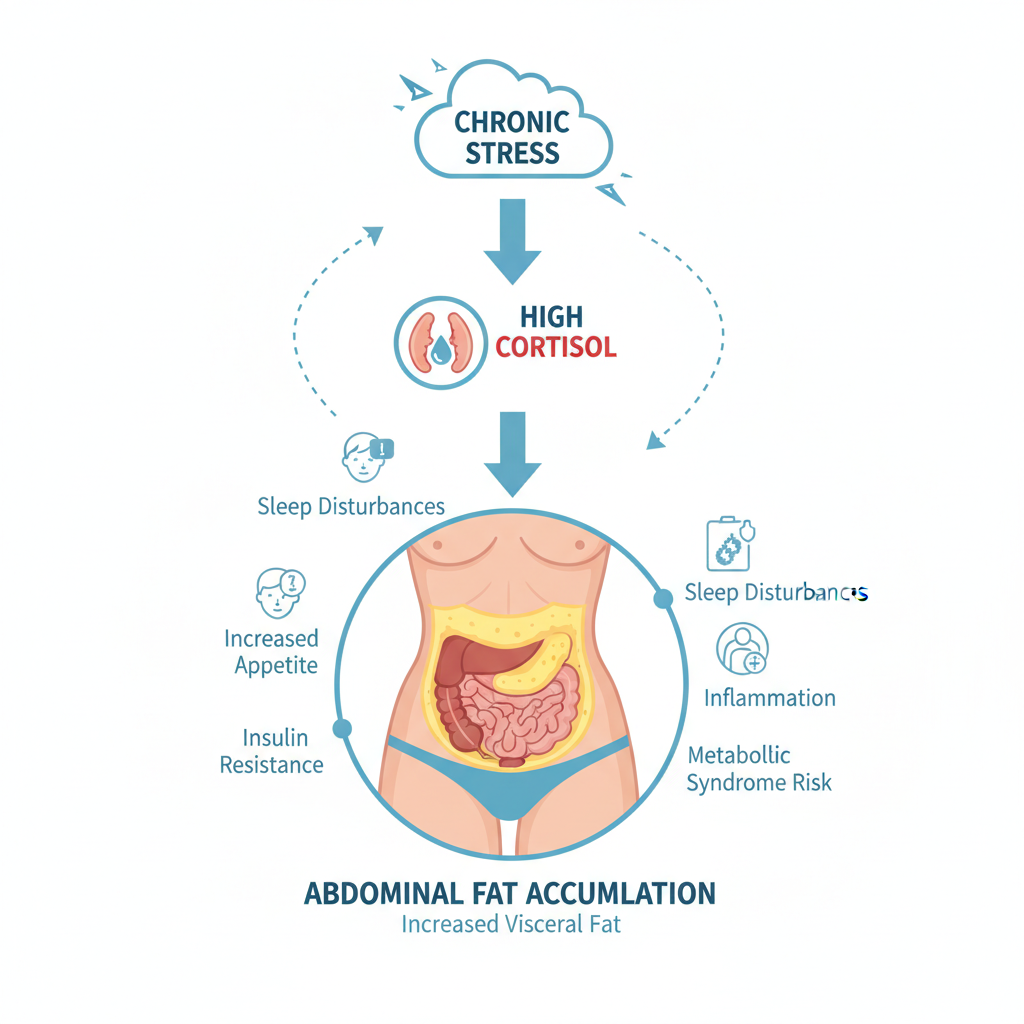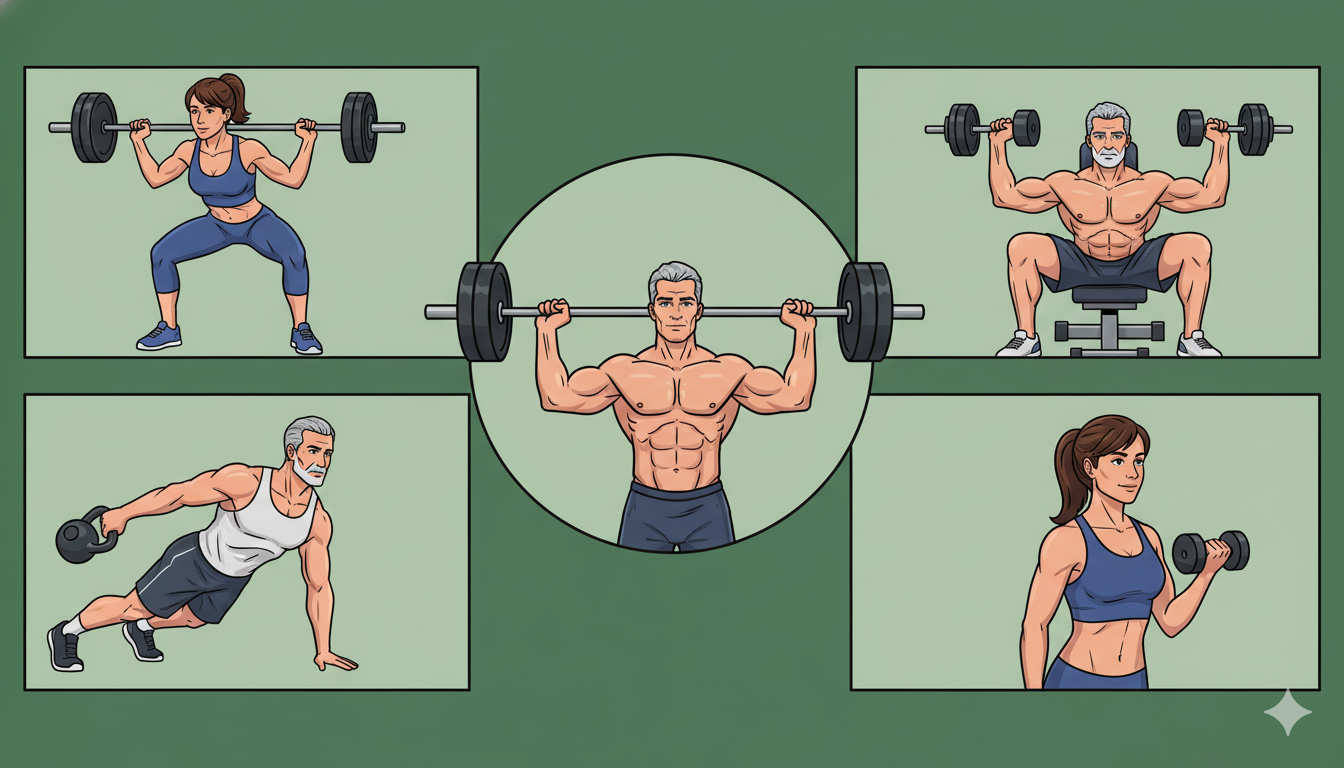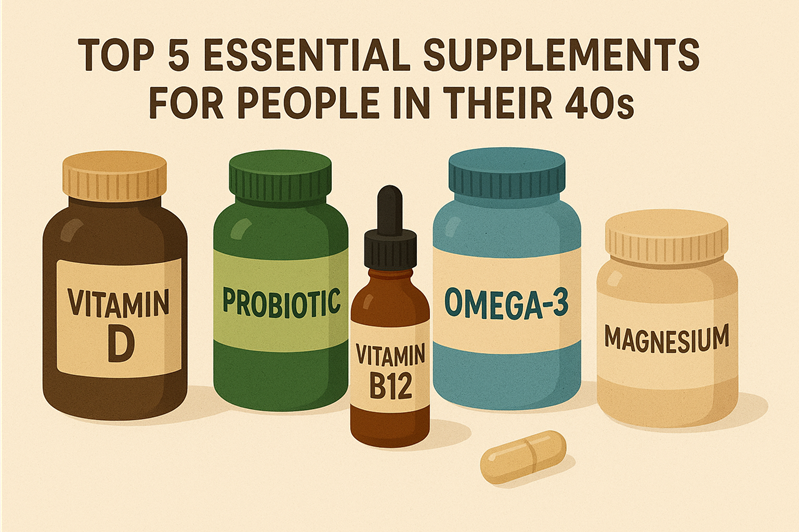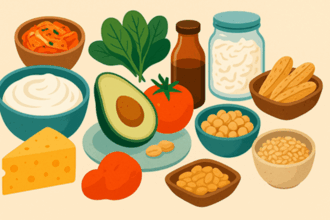[The 40s Redesign, Part 4]: The Cortisol Rollercoaster (How Your 40s Stress Is Making You Fat)
Welcome back. In this series, we’ve been investigating the “crime scene” of our 40s body.
- In Part 1, we identified the hormonal slowdown.
- In Part 2, we identified the “weapon”: dangerous visceral fat.
- In Part 3, we identified the root cause: Sarcopenia, or the loss of our muscle “armor.”
Today, we’re talking about the secret co-conspirator. The one that’s helping the other three get away with it.
It’s the reason why you can be “doing everything right”—eating clean, trying to exercise—and the scale still won’t budge, especially around your middle.
The culprit isn’t in your gym or your kitchen. It’s in your head, your job, and your 24/7 schedule.
We’re talking about Stress, and its biochemical weapon, the hormone Cortisol.
1. What Is Cortisol? (And Why It’s Not All Bad)
Cortisol gets a bad rap, but it’s a vital hormone. It’s your “get up and go” hormone; its levels are highest in the morning to wake you up.
It’s also your primary “survival” hormone.
Imagine our ancestor sees a saber-toothed tiger. The brain screams “DANGER!” and floods the body with cortisol and adrenaline. Cortisol’s main job is to provide instant energy for this “fight or flight” moment. It does this by dumping glucose (sugar) into your bloodstream so your muscles can fight or flee.
In this acute, short-term crisis, this system is a lifesaver. The ancestor either escapes or fights, burns all that sugar, and cortisol levels go back to normal.
2. The 40s Problem: The “Tiger” Is Now 1,000 Emails
Here’s the problem: Your body cannot tell the difference between a saber-toothed tiger and an urgent email from your boss.
Your 40s are not about one big, acute stress. They are about chronic, relentless, low-grade stress.
- Work deadlines
- Mortgage payments
- Aging parents
- Kids’ schedules
- Bad traffic
- Constant phone notifications
- Worrying about the future
To your brain, each of these is a “mini-tiger.” The result is that your body is in a constant, low-level “fight or flight” mode. Your cortisol tap is never shut off.
This is Chronic Stress, and it’s a biochemical disaster.
3. The Cortisol-to-Belly-Fat Pipeline
Let’s follow the chain of events of chronic high cortisol:
- Constant “Emergency”: Your brain keeps sending the “stress” signal.
- Constant Sugar Dump: Cortisol continuously dumps glucose into your bloodstream to “fuel” a fight that never happens.
- Constant Insulin Spike: All that unused sugar in your blood triggers a massive, constant release of insulin (the storage hormone we’ve been talking about).
- A Powerful Fat-Storage Signal: High insulin is your body’s #1 signal to “STORE FAT!” It frantically takes all that excess sugar and converts it into fat for “later.”
- The Visceral Fat “Preference”: Here is the kill shot. Cortisol has a specific preference for where to store this new fat. The fat cells deep in your abdomen (your visceral fat) have four times more cortisol receptors than fat cells elsewhere.
Cortisol is literally targeting your belly, pulling energy from other parts of your body to store it deep in your abdomen. It’s actively creating the dangerous visceral fat we discussed in Part 2.
4. The Vicious Cycle: Stress, Cravings & Sleep
It gets worse. This high-cortisol state creates a feedback loop that’s nearly impossible to break.
- It Sabotages Sleep: Cortisol is the “awake” hormone. When it’s high at night (when it should be low), you can’t fall asleep or you wake up at 3 AM, your mind racing.
- Bad Sleep = More Cortisol: A single night of poor sleep causes your cortisol levels to be even higher the next day.
- It Fires Up Cravings: High cortisol and bad sleep also destroy your hunger hormones. They crank up ghrelin (your “I’m hungry” hormone) and suppress leptin (your “I’m full” hormone).
- It Demands “Survival Food”: You’re not just hungry; you’re hungry for specific things. Your stressed-out, sleep-deprived brain screams for “survival fuel”: high-sugar, high-fat, high-salt “comfort foods.”
You give in (which is a normal human response!), your blood sugar and insulin spike even higher, and Cortisol directs it all… straight to your belly.
Conclusion: You Cannot Outrun a High-Cortisol Lifestyle
This is the “ah-ha!” moment for so many of my clients in their 40s.
They are killing themselves in the gym and eating salads, but they’re also sleeping 5 hours a night, checking work emails at 10 PM, and living in a state of chronic anxiety.
You simply cannot “out-exercise” or “out-diet” a body that is biochemically programmed to store fat.
The key to unlocking health in your 40s isn’t just about managing your macros or your workouts. It’s about managing your stress. It is not “soft” or “woo-woo”; it is a non-negotiable, biochemical necessity.
Now, we’ve finished our diagnosis. We know the four main villains:
- Hormonal Shift (Part 1)
- Visceral Fat (Part 2)
- Sarcopenia/Muscle Loss (Part 3)
- Cortisol/Stress (Part 4)
Now that we know the enemy, it’s time to build our defense. And our #1 defense—the one that fixes your metabolism, burns fat, and builds your armor—is rebuilding your muscle.
In Part 5, we’ll cover the Golden Rule of 40s Exercise… and I’ll tell you why cardio is not the answer.
What is your single biggest source of daily stress, and how do you feel it affecting your body? Share your story in the comments.
(Blog Post Ends)





